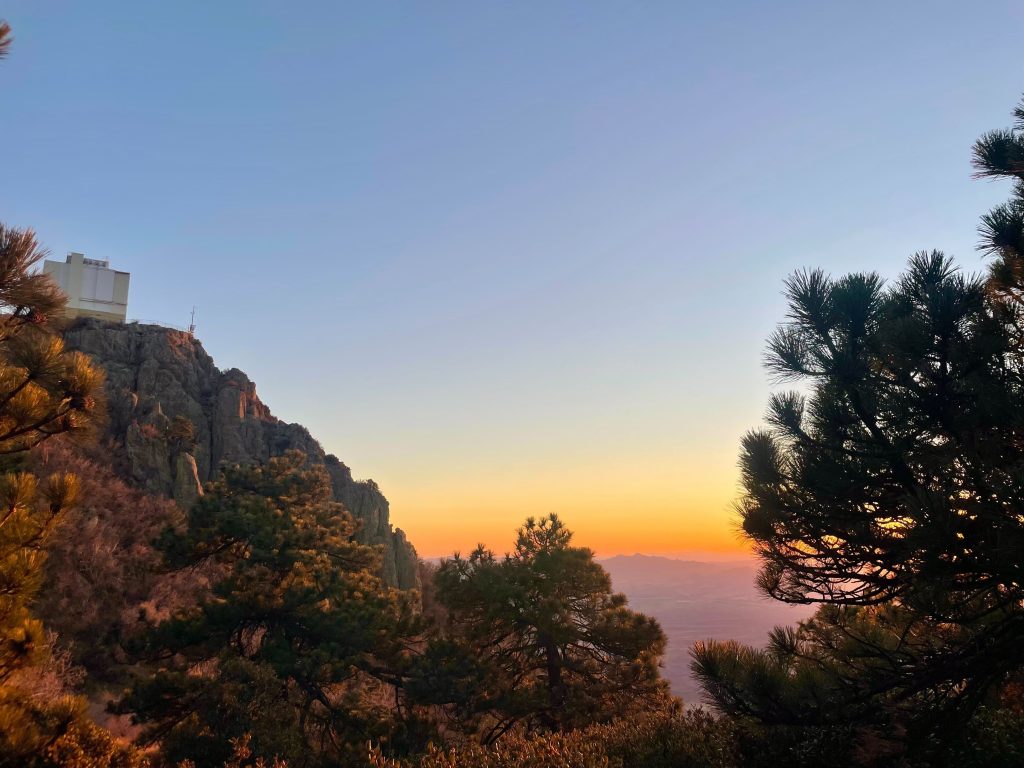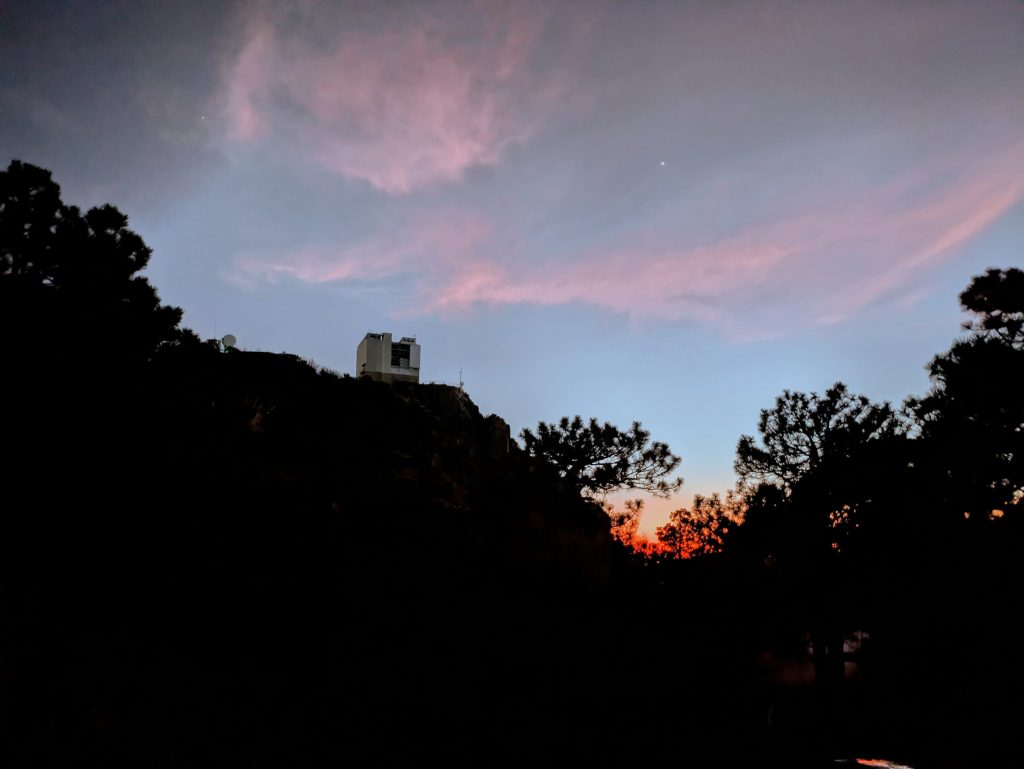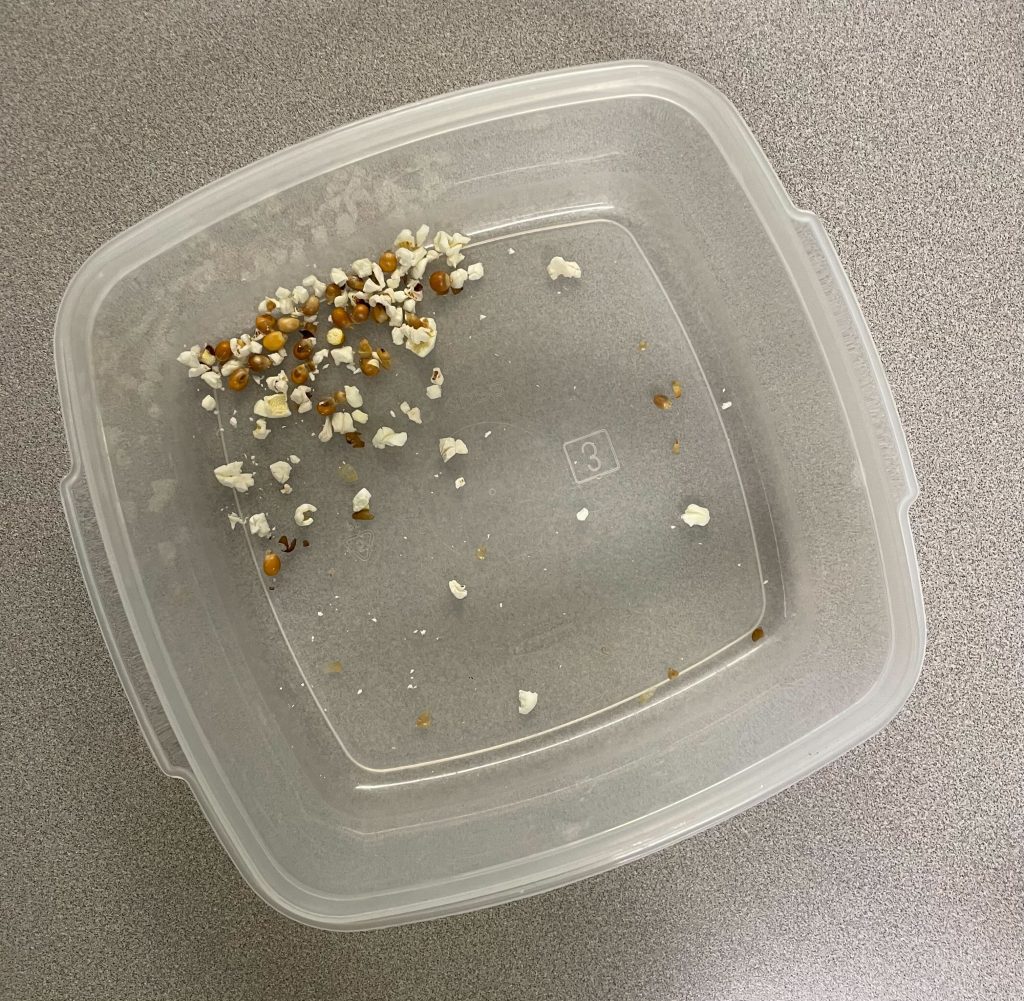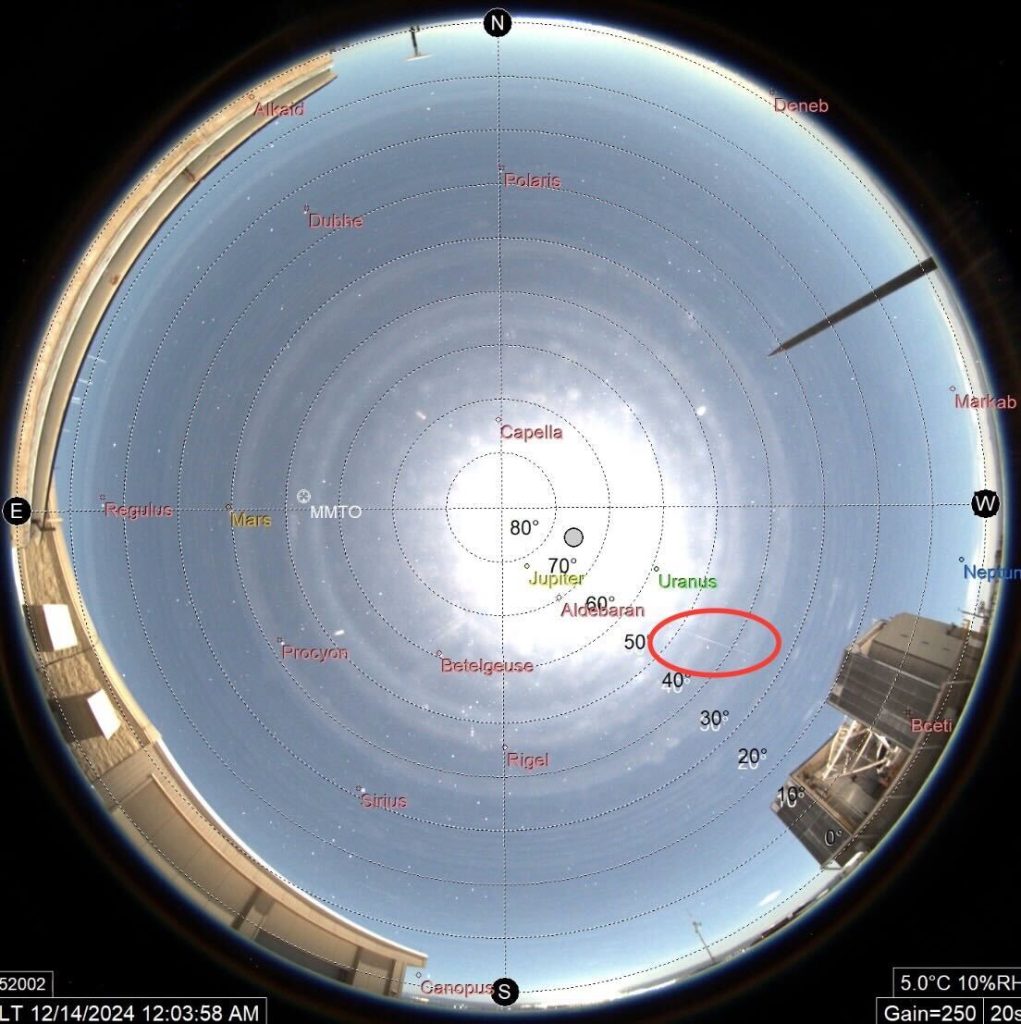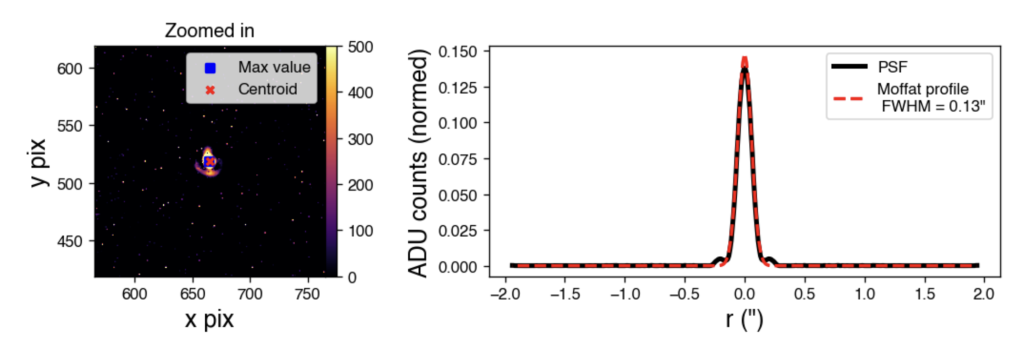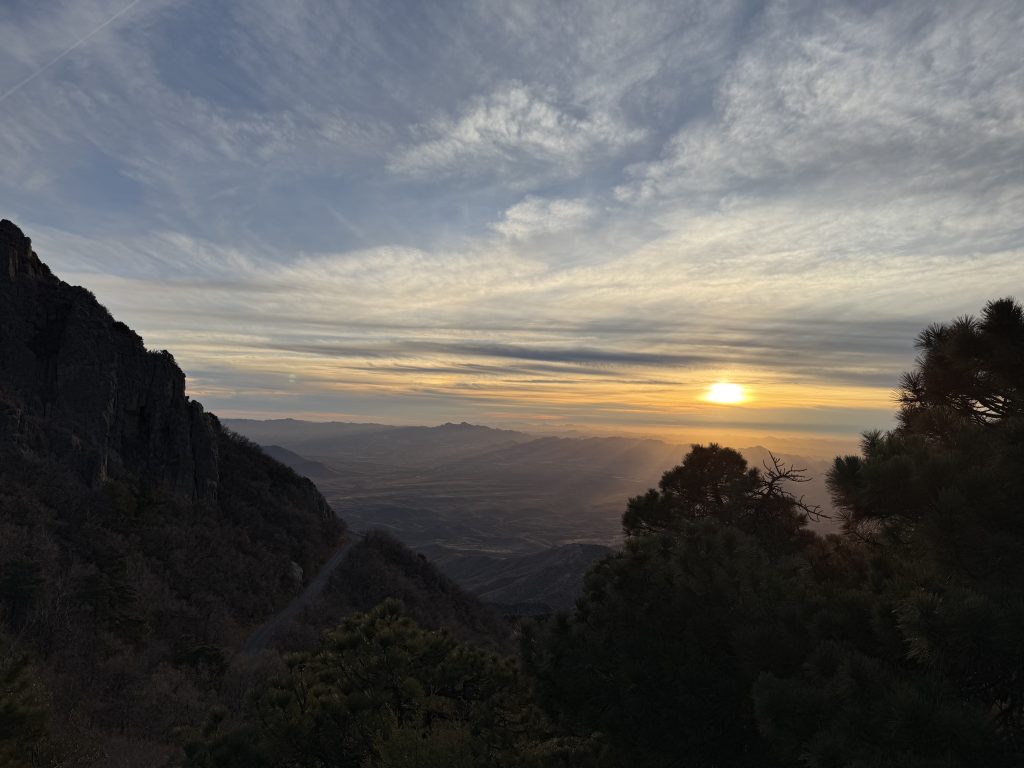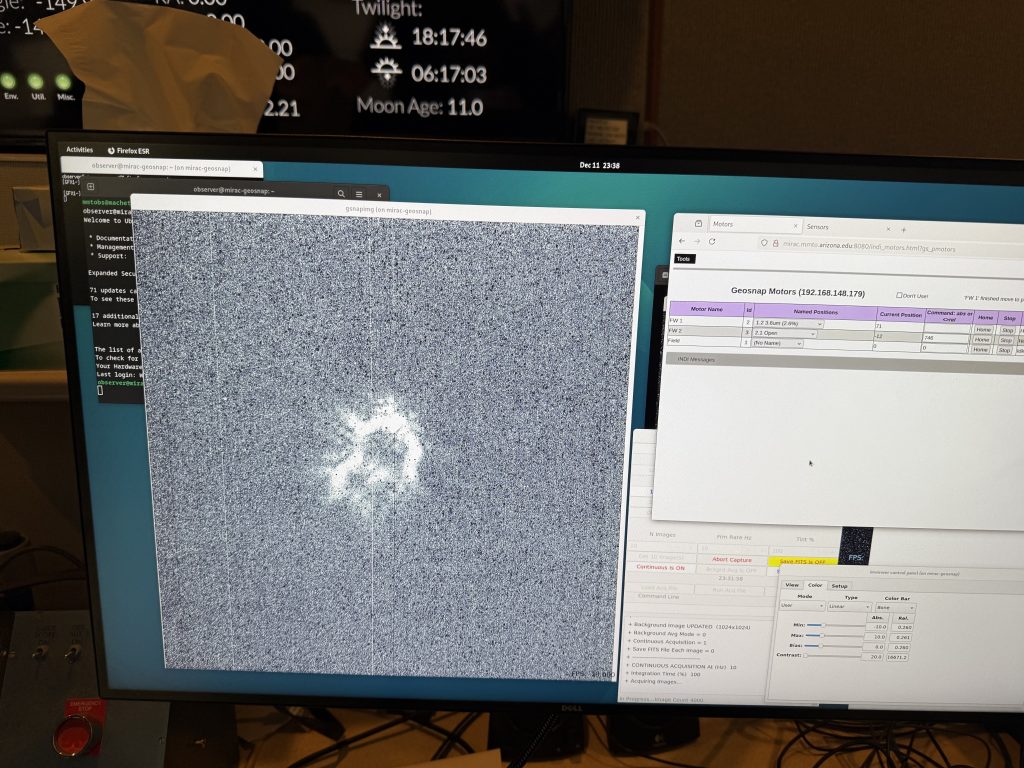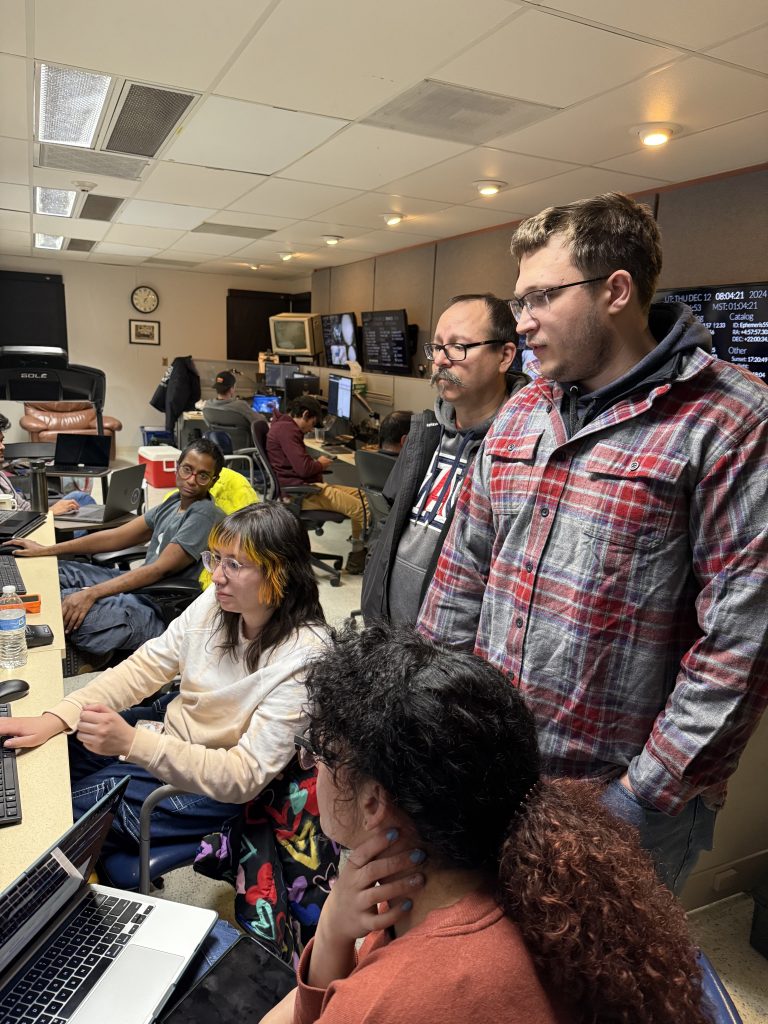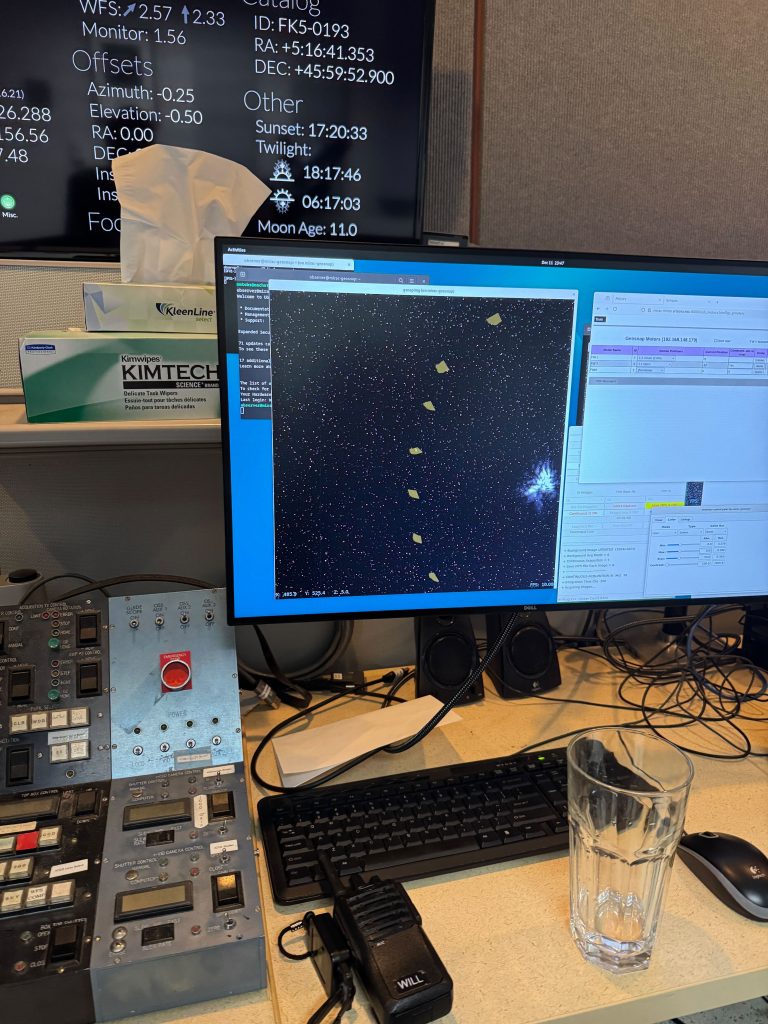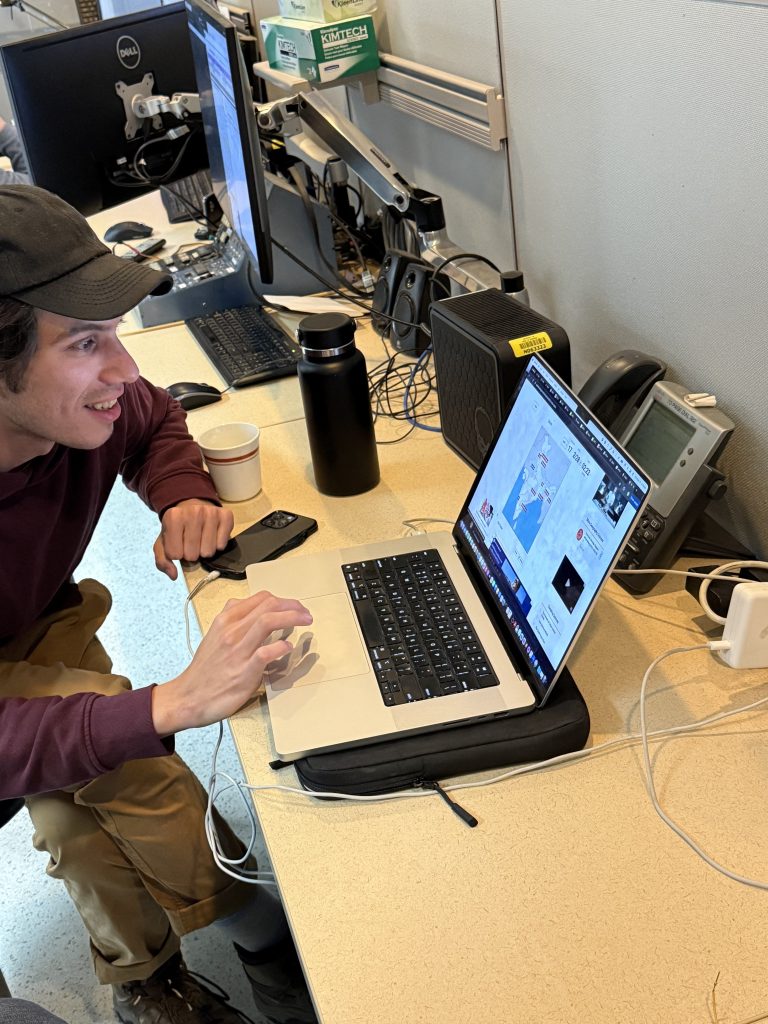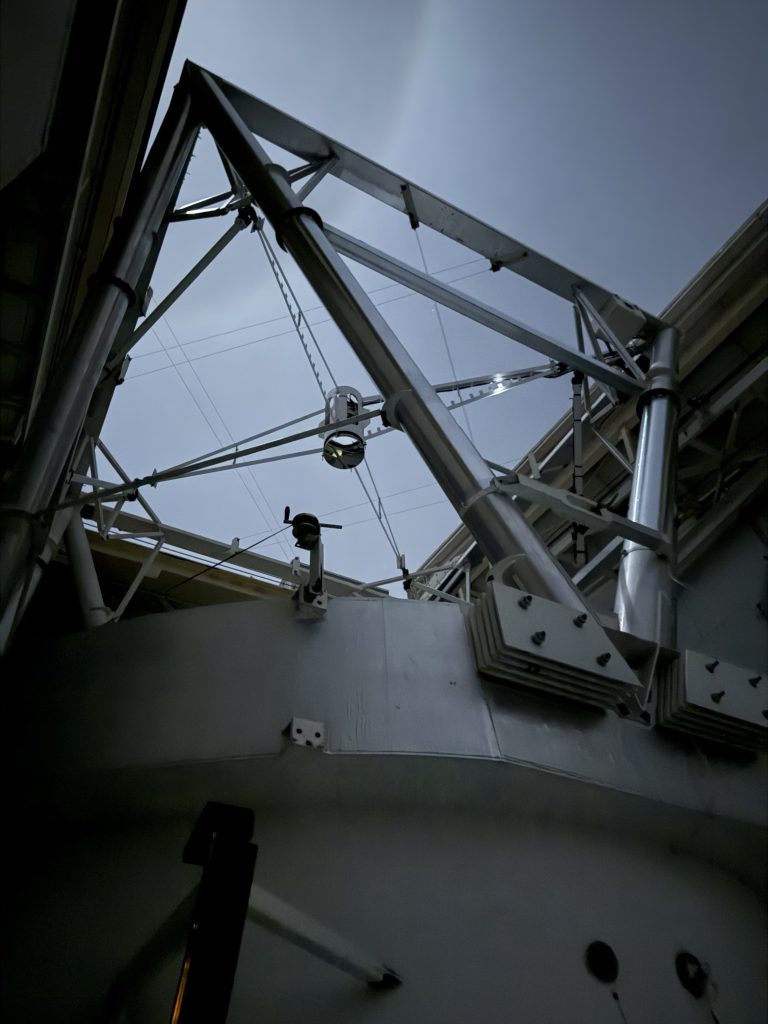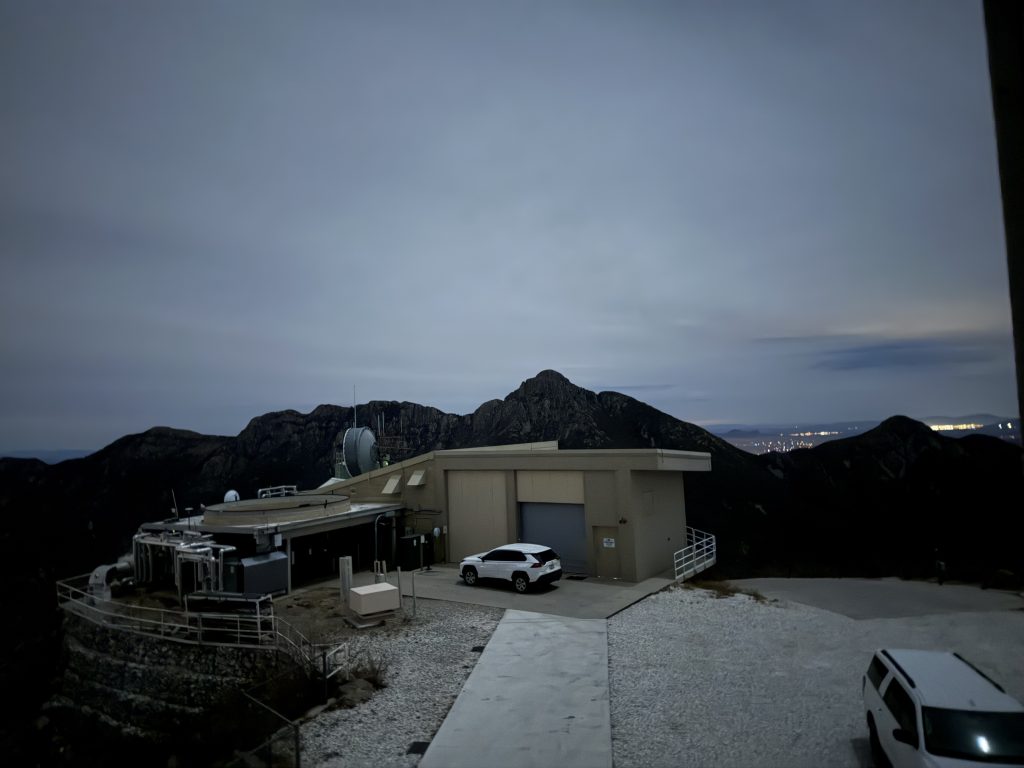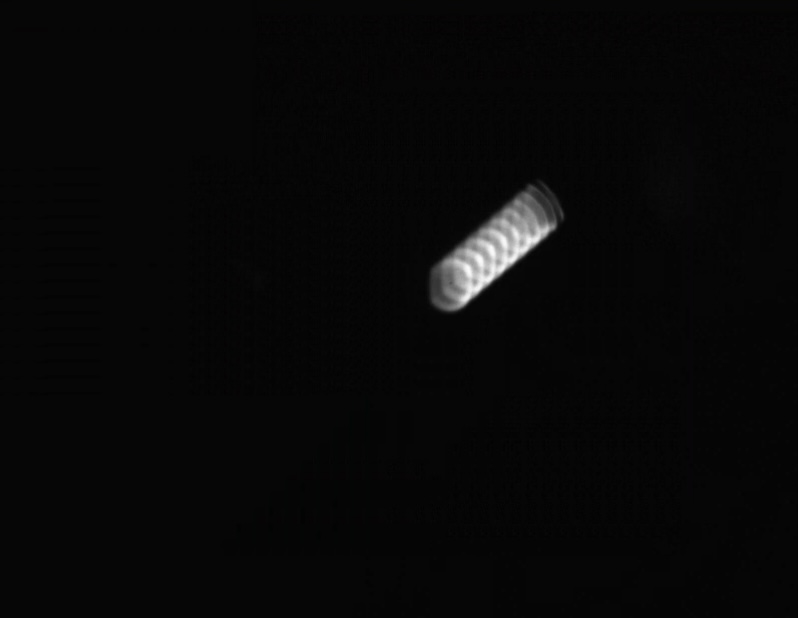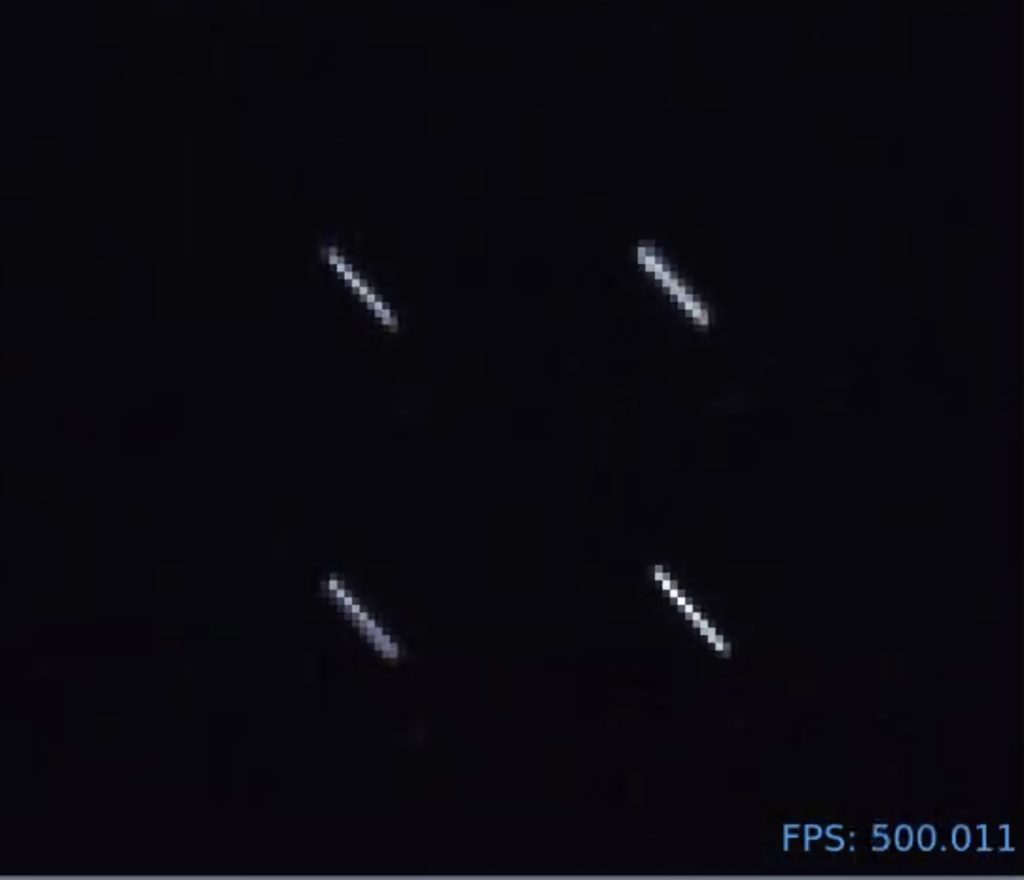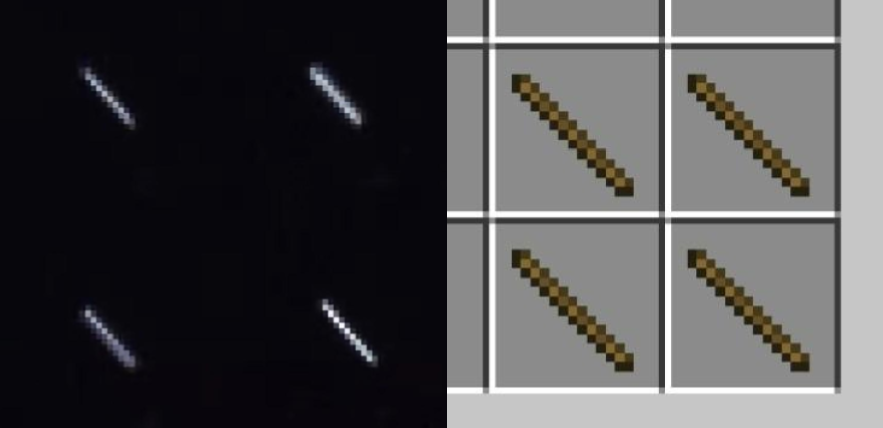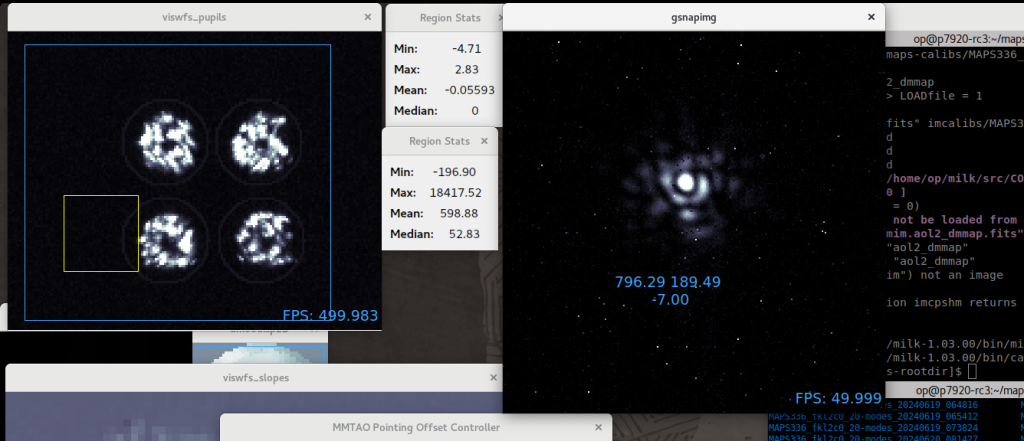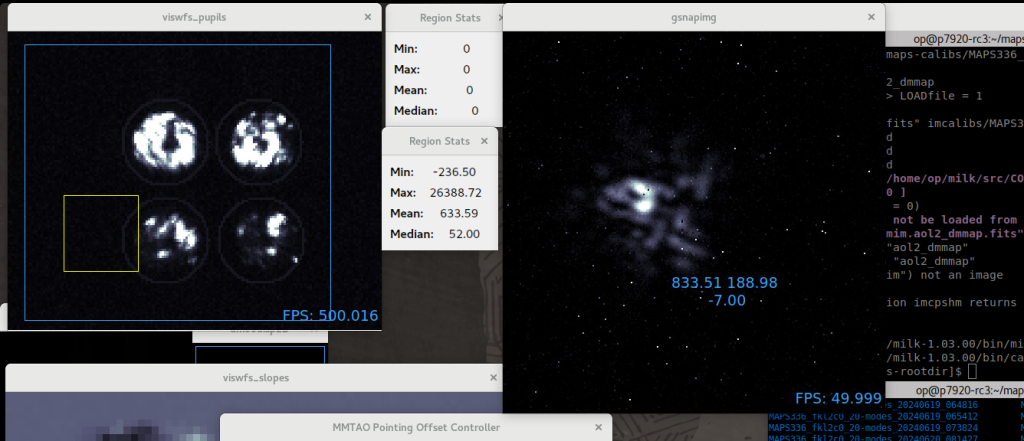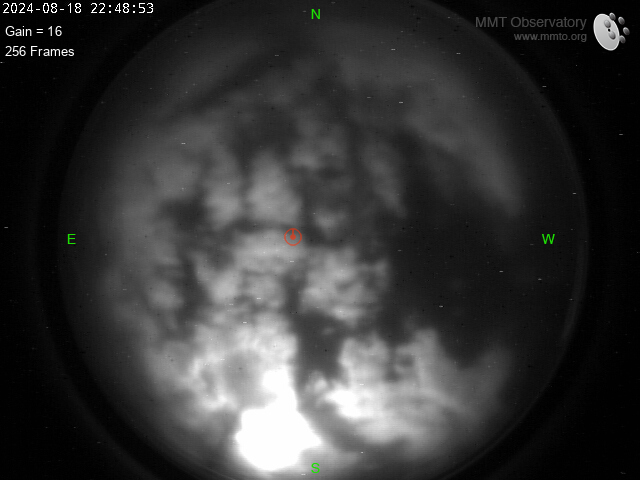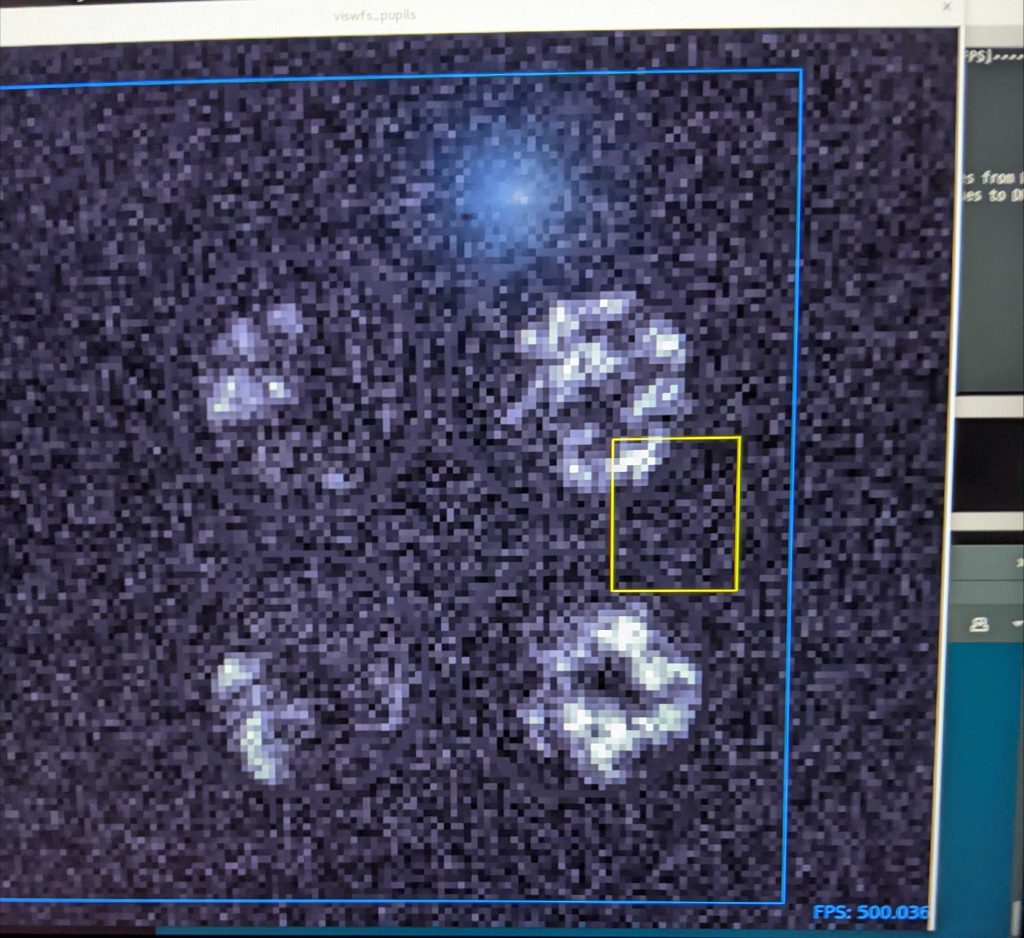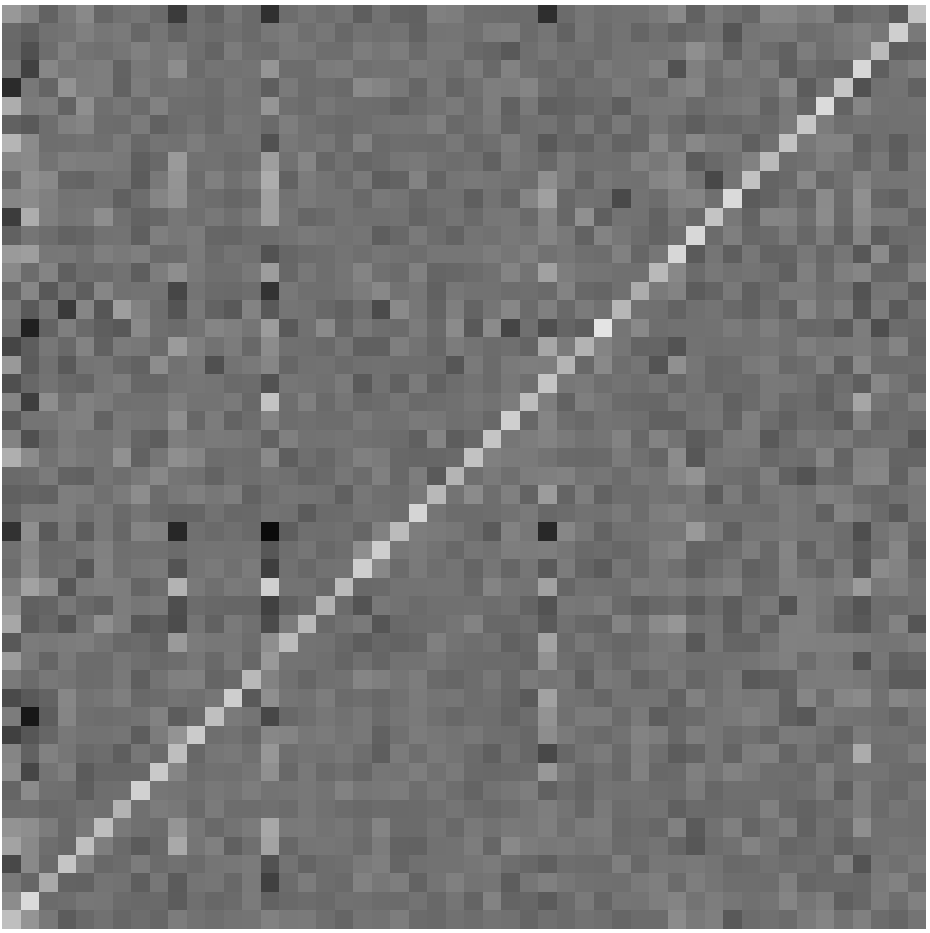With all the bits and pieces working and at the end of last night. Tonight is geared toward the goal of the AO consistency, training, and reliability. As one can see from the picture from the start of the night it does not look promising.

Training Training Training
Amali had a classroom of future AO extraordinaire such as her. When you have to juggle CHAI, CACAO, MILK, INDI and every other software package. Being an AO operator is more of a lion tamer than anything else. In real time you have to be wrangling many different parts to make the AO system work. I am impressed and I think she is teaching a hopeful and bright future for AO and MAPS.
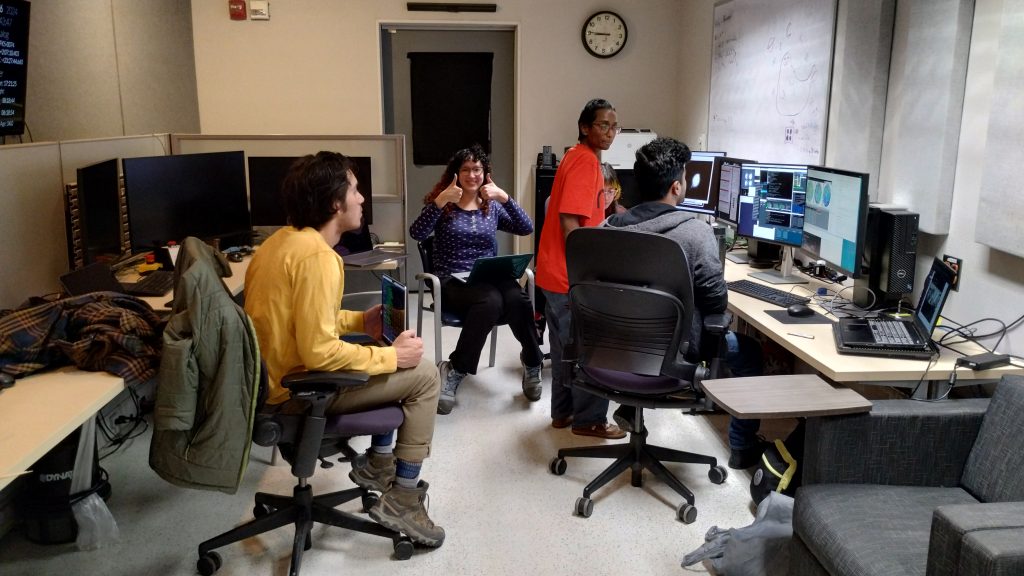
Thank you Amali for all your hard work and know how. Your expertise and know how is next to none.

And you know it is going to be good when you have laser dog poodle in the mix.
Hard work Pays off
This is starting to look like an AO system and we are starting to get to a point where we are no longer wondering how the parts work together, but rather how do we make them better. Congrats to all those that have worked on this system in the past, current, and for our future selves.
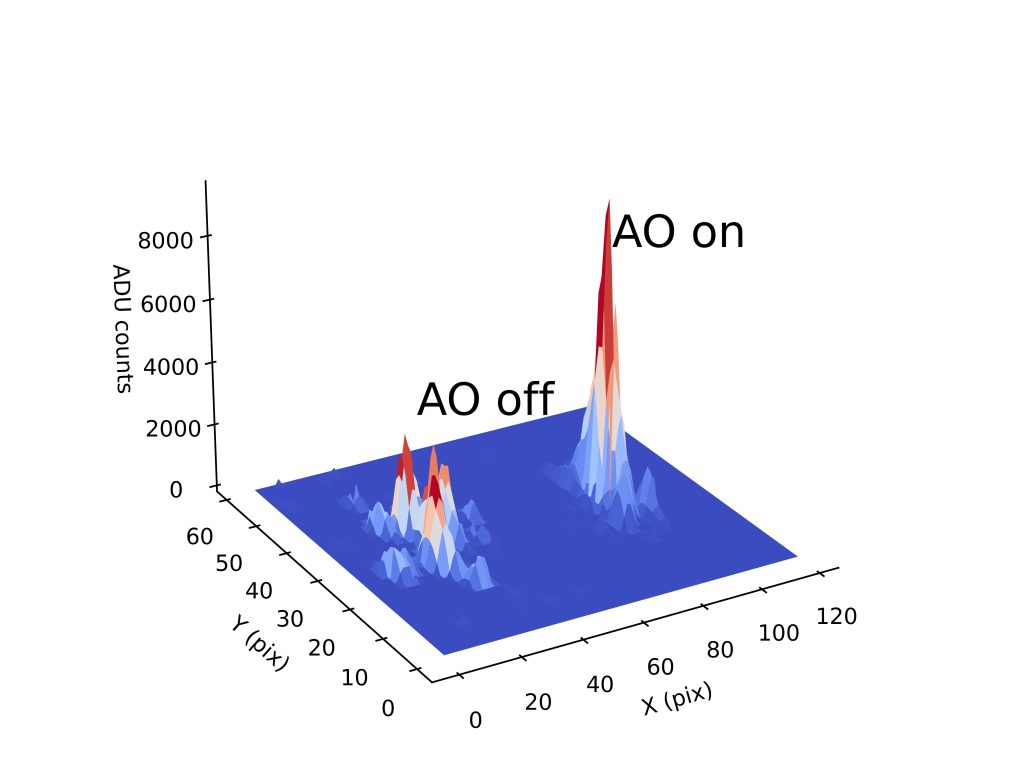
FK5-0074 star (-0.63 K mag), K-band image, closed loop with 50 modes, 73 degrees altitude (1.04 Airmass)
In the Spirt of Christmas I had Chatgpt put a poem together. Thank you AI
The 10 Days of AO Christmas
On the first day of Christmas, the AO team gave to me:
A single ASM guiding flawlessly.
On the second day of Christmas, the AO team gave to me:
Two WFS tracking,
And a single ASM guiding flawlessly.
On the third day of Christmas, the AO team gave to me:
Three MIRAC/BLINCs imaging,
Two WFS tracking,
And a single ASM guiding flawlessly.
On the fourth day of Christmas, the AO team gave to me:
Four CACAO scripts running,
Three MIRAC/BLINCs imaging,
Two WFS tracking,
And a single ASM guiding flawlessly.
On the fifth day of Christmas, the AO team gave to me:
FIVE TOP BOXES aligned!
Four CACAO scripts running,
Three MIRAC/BLINCs imaging,
Two WFS tracking,
And a single ASM guiding flawlessly.
On the sixth day of Christmas, the AO team gave to me:
Six RC3s pointing,
FIVE TOP BOXES aligned!
Four CACAO scripts running,
Three MIRAC/BLINCs imaging,
Two WFS tracking,
And a single ASM guiding flawlessly.
On the seventh day of Christmas, the AO team gave to me:
Seven Chai teas steeping,
Six RC3s pointing,
FIVE TOP BOXES aligned!
Four CACAO scripts running,
Three MIRAC/BLINCs imaging,
Two WFS tracking,
And a single ASM guiding flawlessly.
On the eighth day of Christmas, the AO team gave to me:
Eight milks for Chai tea,
Seven Chai teas steeping,
Six RC3s pointing,
FIVE TOP BOXES aligned!
Four CACAO scripts running,
Three MIRAC/BLINCs imaging,
Two WFS tracking,
And a single ASM guiding flawlessly.
On the ninth day of Christmas, the AO team gave to me:
Nine photons dancing,
Eight milks for Chai tea,
Seven Chai teas steeping,
Six RC3s pointing,
FIVE TOP BOXES aligned!
Four CACAO scripts running,
Three MIRAC/BLINCs imaging,
Two WFS tracking,
And a single ASM guiding flawlessly.
On the tenth day of Christmas, the AO team gave to me:
Ten lasers glowing,
Nine photons dancing,
Eight milks for Chai tea,
Seven Chai teas steeping,
Six RC3s pointing,
FIVE TOP BOXES aligned!
Four CACAO scripts running,
Three MIRAC/BLINCs imaging,
Two WFS tracking,
And a single ASM guiding flawlessly.
Song of the Day
In the spirit of the Holidays “Christmas Moon” · Emmy The Great · Tim Wheeler
